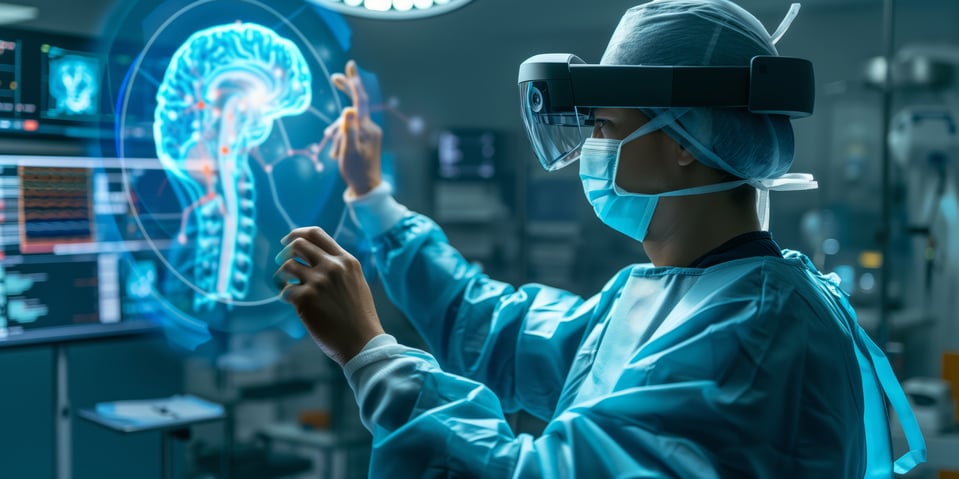
Blogs
Solving AR/VR Quality Issues with Precision Robotics in Medical Applications
AR and VR are quickly becoming critical toolsets in the medical field. One of the earliest uses was in training surgeons. Medical professionals use AR to create a three-dimensional model of the patient's body that they could view from different angles, which allows surgeons to practice surgeries before performing them on an actual patient. From training to surgical procedures, AR and VR are used to improve medical treatments' quality and accuracy. Using AR/VR in medical applications has expanded beyond training purposes. Some current trends include:
- Development of AR/VR applications for surgical procedures, which could help to improve accuracy and precision.
- Use of AR/VR for training and education of medical personnel.
- Development of VR simulations to help patients prepare for and understand medical procedures.
- Use of AR/VR to provide distraction and relief from pain during medical procedures.
AR/VR makes considerable strides year after year, ultimately revolutionizing medical procedures by allowing doctors to have a complete view of the patient’s body. Still, there are a few key quality issues to consider before medical professionals widely adopt virtual developing technologies in medical applications.
AR/VR Quality Issues
Accuracy presents a challenge for AR developers. During testing, there have been cases where the AR application cannot correctly overlay the digital information on top of the real world. Because precision is critical in medical applications, the discrepancy causes a significant issue. VR also faces accuracy issues. Sometimes, patients or doctors experience nausea or other health problems because of the realistic virtual environment. The brain is not always able to accurately interpret the signals it receives from the eyes.
Latency—a delay between the time a user performs an action and the time that same action displays on-screen—presents another challenge for AR/VR technology. Similar to low accuracy measurements, high latency measurements can cause dizziness and nausea in users, making it difficult to interact with virtual environments. High latency also makes it difficult for users to perform the desired action.
AR/VR medical device developers must consider accuracy and latency to manufacture a premier product for medical use—one with a safe, effective, exceptional user experience.
Precision Robotics Testing Solution
Automated testing equipment built with high-precision robotics solves many quality challenges by replicating user interaction in a controlled environment. Repeatable testing allows for accurate measurement of performance and reliability and identifies issues that may affect patient safety. Specifically, OptoFidelity’s automated testing systems BUDDY and HMD IQ test for high accuracy and low latency in your AR/VR devices.
OptoFidelity's BUDDY measures the latency performance and accuracy of AR and VR head mounted displays (HMDs). Using precision robotics, BUDDY evaluates various HMD parameters, such as positioning, latency, and field of view. Device manufacturers use this data to verify the accuracy and performance of their products before release, ensuring a high-quality user experience. BUDDY also offers valuable data for developers, who use it to optimize the design process.
OptoFidelity's HMD IQ testing system measures and quantifies the image quality of HMDs. The system consists of a calibrated camera and a purpose-built lens to mimic the human eye, allowing for objective and accurate image quality measurements including resolution, contrast, distortion, and chromatic aberration. It also provides valuable information on how well a device performs under various conditions, such as the differences in the environment's light conditions, which helps manufacturers to improve the image quality of their products. In medical applications, bright light and the quality of the image in HMDs contribute to facilitating precise movements.
Overcome quality and accuracy challenges with the help of precision robotics testing. Automated testing provides measurements that can help you provide an immersive experience for your customers while meeting or exceeding industry standards.
Boost quality with BUDDY and HMD IQ.
Written by



